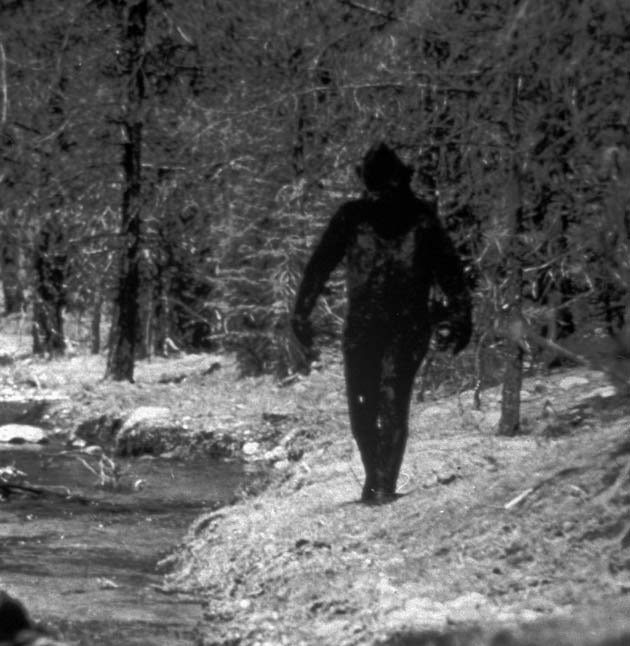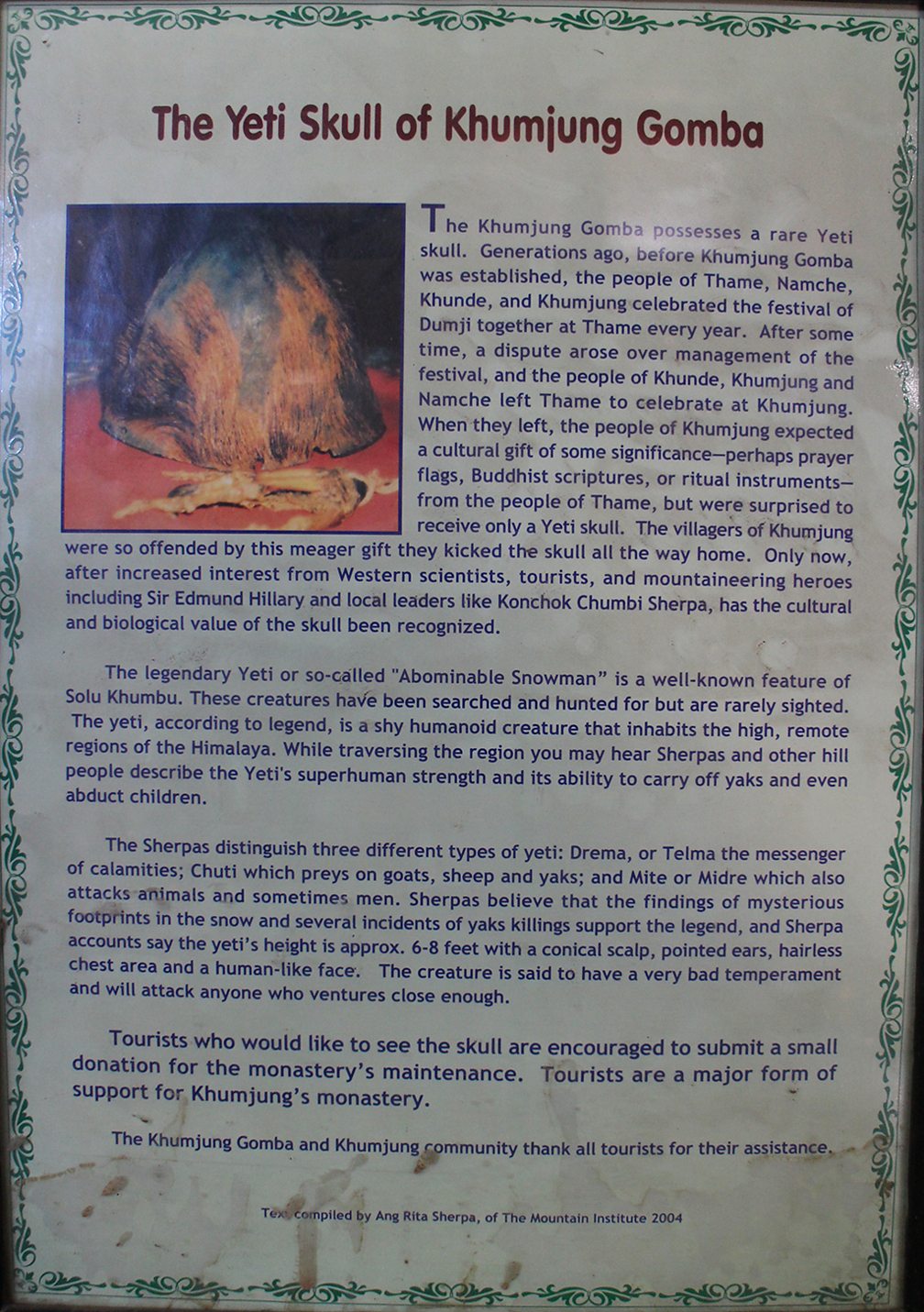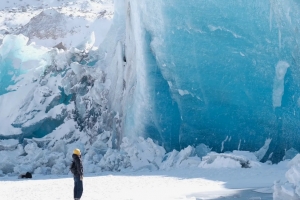When you gaze upon the majestic, snow-covered peaks of the Himalayas, have you ever wondered if there’s something more to these icy expanses than meets the eye? For centuries, local legends have spoken of a mysterious creature roaming the high mountains—a creature part man, part beast, and known by many as the Abominable Snowman or simply the Yeti. While the truth behind this creature has captivated adventurers, researchers, and storytellers alike, the Yeti continues to occupy a unique space at the intersection of myth and reality.
In this article, we will explore the various facets of the Yeti legend, examine scientific studies, and share 10 intriguing facts that may help answer the perennial question: Is Yeti real? Whether you’re a skeptic, a believer, or simply fascinated by the unknown, this deep dive into Yeti lore will enlighten you on why this enigma endures in popular culture and scientific debate.

A Glimpse into the Himalayan Mystery – Yeti Animal
The legend of the Yeti finds its roots in the rugged, isolated highlands of the Himalayas. Locals have long passed down tales of a large, hairy creature that roams these unforgiving landscapes. Descriptions of the Yeti vary, but many accounts depict it as a human-like figure covered in thick, reddish-brown fur. For the inhabitants of these remote regions, the Yeti is more than just a creature—it is a symbol intertwined with local folklore, spiritual beliefs, and the awe-inspiring power of nature.
In many mountain villages, stories of the Yeti are woven into everyday life. They serve as cautionary tales for children and as topics of conversation among elders. Despite the wide variety of descriptions, a few common themes emerge: the Yeti is elusive, it leaves behind mysterious footprints, and its presence is often linked to supernatural qualities. These enduring narratives have contributed significantly to the Yeti’s mythical status, ensuring that its legend continues to intrigue both locals and visitors.
Over the decades, numerous explorers and mountaineers have reported sightings of a creature that bears a striking resemblance to the folkloric Yeti. Notable figures such as Sir Edmund Hillary and Eric Shipton brought international attention to these claims through their expeditions in the Himalayas. During his historic 1953 climb of Mount Everest, Hillary famously encountered large, enigmatic footprints that sparked global speculation. Despite the fervor these sightings ignited, tangible evidence—such as physical remains or verified biological samples—remains scarce.
The scarcity of solid proof has led many to question whether the Yeti is simply a myth or a case of mistaken identity. However, this lack of evidence has not stopped the Yeti from becoming a fixture in both cryptozoological investigations and popular culture.
Scientific Inquiries and the DNA Debate

In recent decades, advancements in genetic analysis have provided researchers with new tools to explore the mystery of the Yeti. Scientists have examined a variety of samples attributed to this elusive creature—ranging from hair and bones to skin and even fecal matter. In one notable study, researchers compared the DNA from 24 alleged Yeti specimens with that of known species such as the Asian black bear, the Himalayan brown bear, and other regional wildlife. The results were illuminating: the genetic markers in many samples closely matched those of local bear species.
For instance, mitochondrial DNA sequencing conducted by experts revealed that several samples thought to belong to the Yeti were, in fact, from bears native to the region. These findings suggest that some of the sightings and relics might be the result of misidentifications rather than evidence of a completely unknown primate species. However, one or two samples still left researchers puzzled by not matching any known bear species, leaving the door open to further investigation.
The debate over Yeti DNA is a fascinating intersection of folklore and modern science. Researchers like Bryan Sykes and Ross Barnett have applied advanced DNA sequencing techniques to purported Yeti remains. While many of these samples were eventually linked to known species, the occasional anomaly continues to fuel the debate. It is worth noting that environmental factors—such as the harsh climate and the degradation of biological materials—complicate the collection and analysis of samples from these remote areas.
Ultimately, the scientific community remains divided. Some argue that the evidence overwhelmingly supports the theory that Yeti sightings are misinterpretations of familiar animals. Others hold out hope that one day, a sample of unequivocal origin will emerge, providing clarity on this long-standing mystery.
Misidentification: Bears, Folklore, and the Art of Perception
- The Bear Connection
One of the most compelling alternative explanations for the Yeti phenomenon is that of misidentification. The Himalayan region is home to several species of bears, including the Himalayan brown bear and the Asian black bear. These animals share several physical characteristics with the descriptions given by Yeti witnesses. For example, the brown bear’s shaggy, reddish-brown coat and occasionally bipedal posture can be mistaken for a more human-like figure, especially when observed under poor light or from a distance.
Critics of the Yeti’s existence point out that the phenomena of mistaken identity are common in environments where visibility is low and folklore heavily influences perception. When explorers are already primed to expect the unexpected, even an ordinary animal can be transformed into a creature of legend.
- The Polar Bear Hypothesis
Another intriguing theory suggests that some Yeti sightings might have been influenced by encounters with polar bears. Although polar bears are not native to the Himalayan region, there have been suggestions that unusual weather patterns and shifting ice floes could, on rare occasions, lead to polar bears venturing into more temperate zones. While this theory might seem far-fetched, it underscores the complexity of interpreting wildlife behavior in extreme environments.
- Cultural Lenses and Myth-Making
Local folklore plays a significant role in shaping the perceptions of natural phenomena. In regions where oral tradition is strong, the boundaries between myth and reality often blur. Stories of the Yeti have been passed down through generations, with each retelling adding layers of embellishment and supernatural qualities. This cultural lens not only magnifies ordinary events but also imbues them with a sense of mystery and significance. As a result, even an encounter with a known animal can be perceived as evidence of something far more extraordinary.
The Yeti in History and Culture

The Yeti’s roots extend deep into the history of the Himalayan region. Historical texts, local legends, and early explorers’ accounts all contribute to a rich tapestry of narratives that have shaped the creature’s myth. Early European explorers in the 19th century began documenting these tales, which eventually captured the imagination of the global public. As these stories spread, the Yeti transformed from a regional folklore into an international symbol of the unexplained and mysterious.
Some of the most famous Yeti encounters have been recorded by notable mountaineers and adventurers. Sir Edmund Hillary, the legendary climber, recounted discovering large footprints and remnants that many believed belonged to the elusive creature. Similarly, Eric Shipton, a renowned Himalayan explorer, reported capturing images of unusual tracks and formations that spurred further interest and investigation.
These early encounters did not yield definitive proof but instead added layers of intrigue. Over time, these accounts have been dissected, debated, and celebrated as part of the enduring legend of the Yeti. The fascination with this creature is not merely academic; it is a living part of the cultural heritage of the Himalayan peoples.
The Yeti has transcended its status as a mere creature of folklore to become an icon in popular culture. From movies and documentaries to literature and merchandise, the image of the Abominable Snowman is ubiquitous. This modern portrayal often blends elements of horror, adventure, and mystery, keeping the legend alive in contemporary storytelling. Whether depicted as a misunderstood guardian of the mountains or as a monstrous threat, the Yeti continues to capture the public’s imagination.
Economic Impact and the Role of the Yeti in the Tourism
- A Draw for Adventure Seekers
Beyond its cultural and scientific significance, the Yeti has also become a powerful driver of tourism in the Himalayan region. Remote valleys and high-altitude villages have transformed into hubs for adventure tourism, attracting travelers who are eager to experience the landscapes that fostered the legend. For many, the thrill of potentially encountering a creature shrouded in myth adds an extra layer of excitement to their journey.
One striking example is the Mechuka Valley in Arunachal Pradesh. Renowned for its stunning vistas and rich cultural heritage, Mechuka has embraced the Yeti lore as a means of promoting tourism. Local guides share tales of mysterious sightings and unexplained sounds, enticing visitors to explore the remote wilderness. This form of “myth tourism” not only fuels local economies but also helps preserve indigenous narratives that have defined the region for centuries.
- Merchandise and Local Business
The influence of the Yeti extends well beyond guided tours. In many Himalayan towns, shops sell everything from Yeti-themed souvenirs and apparel to books and documentaries. These merchandise offerings provide additional income for local communities and help keep the legend alive in the collective consciousness of both residents and visitors. Moreover, festivals and cultural events celebrating local folklore often feature the Yeti as a central figure, drawing in crowds and further bolstering economic activity.
- Preserving Cultural Heritage
Tourism centered around the Yeti does more than boost local economies—it plays a crucial role in preserving cultural heritage. As local populations interact with a global audience, they are able to share their stories and traditions, ensuring that ancient narratives are not lost to time. In this way, the Yeti is both a symbol of mystery and a catalyst for cultural preservation.
10 Intriguing Facts About the Yeti Animal

After exploring the broader themes surrounding the Yeti, let’s delve into ten fascinating facts that encapsulate this enduring mystery:
1. Ancient Legends Meet Modern Curiosity
Local folklore in the Himalayas dates back centuries, with the Yeti often described as a large, bipedal creature with a coat of reddish-brown fur. While many traditional tales attribute supernatural abilities and almost spiritual significance to the creature, modern accounts tend to offer more down-to-earth descriptions that sometimes resemble known wildlife.
2. A Common Mix-Up with Bears
A prevailing theory suggests that many Yeti sightings are simply misidentifications of local bear species. The Himalayan brown bear, with its robust build and shaggy fur, and the Asian black bear, with its thicker winter coat, are frequent inhabitants of these regions. In conditions of poor visibility, the bipedal gait of these animals can easily be mistaken for something far more mysterious.
3. The Polar Bear Connection
Though seemingly improbable, there exists a theory that some Yeti sightings could be linked to polar bears. While polar bears are native to the Arctic, rare instances of them drifting to more temperate regions have been suggested as a possible source of confusion among local populations unfamiliar with their appearance.
4. DNA Studies Reveal Familiar Patterns
Modern genetic research has played a crucial role in demystifying the Yeti. Studies analyzing DNA from alleged Yeti specimens have repeatedly found matches with local bear species. However, a few samples remain enigmatic, sparking debates and encouraging further research into what might be a rare or unknown subspecies.
5. High-Altitude Footprints That Sparked Global Debate
Historical expeditions have reported finding enormous footprints in the snow, which many attributed to the Yeti. The famous footprints discovered by Sir Edmund Hillary during his Everest expedition continue to intrigue researchers. Although later analyses often point to bear tracks, these mysterious imprints still form the cornerstone of Yeti lore.
6. The Royal Society’s Involvement
The intrigue surrounding the Yeti has even reached the halls of respected scientific institutions. Members of the Royal Society and other prestigious bodies have examined relics attributed to the creature. DNA sequencing and other forensic analyses conducted by experts like Dr. Ross Barnett have largely reinforced the idea that many of these relics belong to known species, yet the allure of the unknown persists.
7. A Cultural Icon Among the Sherpas
Among the indigenous people of the Himalayas, the Yeti is more than just a creature—it is part of their cultural fabric. Sherpas, renowned for their mountaineering skills and deep connection with the mountains, have long shared stories of encounters with these mysterious beings. They even believe that the Yeti’s unusual footprints—often described as having backward-pointing toes—help the creature navigate steep slopes more efficiently.
8. A Role in Shaping Local Tourism
The legend of the Yeti has been a boon for local tourism. Regions like the Mechuka Valley in Arunachal Pradesh capitalize on these tales by offering guided expeditions, cultural tours, and Yeti-themed souvenirs. This blend of myth and modern tourism not only fuels the local economy but also helps preserve centuries-old traditions.
9. Encounters Recorded by Famous Mountaineers
Famous explorers such as Sir Edmund Hillary and Eric Shipton have recorded encounters with what they believed to be evidence of the Yeti’s existence. From mysterious hair samples to shadowy figures caught in the twilight, these accounts continue to be referenced in discussions about the creature. Their experiences have lent the legend an air of credibility that has kept the debate alive for decades.
10. The Yeti’s Place in Modern Cryptozoology
Today, the Yeti remains a central figure in the field of cryptozoology—the study of animals that exist outside the realm of conventional science. Despite repeated debunkings and the identification of many samples as bear remains, the Yeti’s myth endures. Cryptozoologists continue to seek evidence, driven by the tantalizing possibility that this elusive creature may one day be confirmed as a living species.
The Enduring Appeal of the Yeti Animal
The Yeti’s enigmatic allure is a potent mix of nature’s mystery and human storytelling. Its legend compels us to look beyond the familiar and entertain the possibility that our world still harbors secrets yet to be uncovered. For the local inhabitants of the Himalayas, the Yeti is a living part of their cultural narrative—a symbol that bridges the gap between myth and the harsh realities of nature. For modern scientists and explorers, it is a challenge: a mystery that beckons us to delve deeper into the unknown corners of our planet.
In many ways, the Yeti represents the eternal struggle between belief and skepticism. While compelling evidence is hard to come by, the consistency of eyewitness accounts and the occasional genetic anomaly remind us that not all mysteries can be neatly explained by science alone. Instead, the Yeti continues to be a fascinating case study in how folklore, human psychology, and nature converge to create a legend that is both inspiring and confounding.
Looking ahead, advances in genetic analysis, remote sensing, and environmental research promise to shed further light on the Yeti mystery. With every new expedition and every refined analytical technique, scientists edge closer to understanding whether the Yeti is a misinterpreted bear, an as-yet-undiscovered species, or simply a persistent myth born of human imagination. Until definitive evidence emerges, the Yeti will remain an enduring symbol of the mysteries that nature still holds.
The The Yeti Legend Lives on

The legend of the Yeti continues to fascinate, challenge, and inspire. Its story is a rich tapestry woven from threads of ancient folklore, modern scientific inquiry, and the unyielding human desire to uncover the unknown. From the shadowy slopes of the Himalayas to the laboratories where DNA samples are scrutinized, the quest to determine whether the Yeti is real has spanned generations and crossed disciplines.
In exploring the 10 intriguing facts outlined above, we see that the Yeti is more than just a creature of myth—it is a symbol of the intersection between nature, culture, and science. Whether you remain a skeptic who attributes the legend to misidentified bears or a believer in the unexplained, the mystery of the Yeti reminds us that sometimes, the journey to uncover the truth is as compelling as the truth itself.
As long as the towering Himalayan peaks stand as silent sentinels over the snow, the legend of the Yeti will continue to provoke wonder, debate, and adventure. Perhaps one day, a breakthrough in research will finally unravel the mystery behind those giant footprints and mysterious hair samples. Until then, the Yeti remains an enigma—an enduring testament to the power of myth in a modern world.










